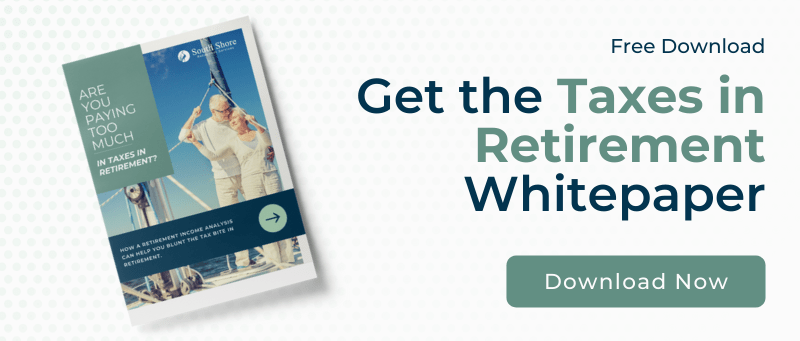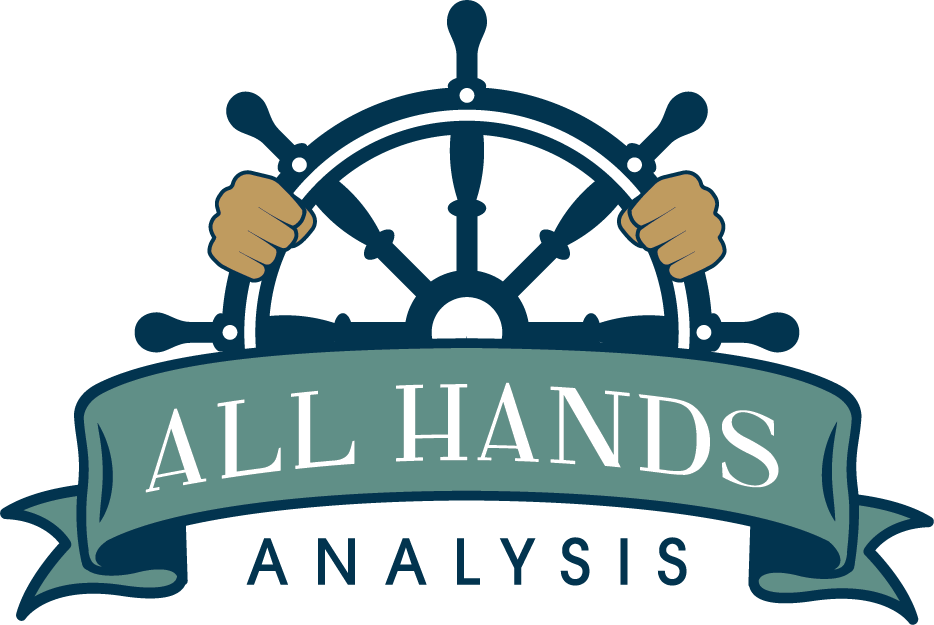Tikis & Taxes: Tax Planning in Retirement
Every year on the coldest day of winter, I get a call from a group of clients in Florida. This flock of “snowbirds” (retirees who migrate south for the winter) gleefully calls to report they’re enjoying afternoon cocktails at a tiki bar, while I’m trying to keep warm in frosty New England.
I know this teasing is all in good fun, and I actually love hearing from them.
Goal setting can make designing a retirement strategy infinitely more straightforward. When you identify your goals, you can develop a strategy where you don’t have to worry about running out of money or face paying harsh penalties because you weren’t studying the tax code closely enough. Because, I think we can all agree, your retirement goals would never include forgoing the tiki because of your taxes.
Uncle Sam & Retirement Savings
The U.S. tax code is built on a constantly shifting terrain. It can be as complicated as it is dynamic. And this can make it difficult to navigate without devoting your life to studying the tax code. Over the past few years, sweeping changes were enacted that directly impact your retirement investments, changes like when you can begin to withdraw money and how your heirs can inherit your accounts. With a tax code that’s constantly getting a face-lift, I’m shocked by how consistently tax planning is missing from retirement strategies. Specifically, they don’t incorporate how to avoid tax liabilities for you or your children down the road.
Now, I’m not an accountant, so I can’t give tax advice, but I’ve had loads of people ask me to explain the rules in plain English. So without getting too into the weeds, I’ll give you a quick overview. But for a more detailed explanation, I recommend you head over to the IRS website and give their Required Minimum Distributions FAQs a read and if you have any questions, speak with a tax professional you trust. Anyway, here we go.
Relationship Status: It’s Complicated
The IRS doesn’t allow you to keep your retirement funds in your accounts indefinitely. So once you hit a certain age, you have to take certain distributions. And the IRS is who determines the minimum amount that you have to withdraw. That minimum amount is called the Required Minimum Distribution (RMD).
Even though you’ve been deferring taxes on them for years, the IRS never meant for retirement accounts to be wealthy transfer vehicles. The government calculates that retirees will live, on average, around 25 years after they start taking RMDs; and Uncle Sam expects all of your money to be out of your accounts when those 25 years are up.
Before 2019, the IRS required retirees to begin taking RMDs from traditional IRAs and 401Ks at age 70½. But with the passage of the SECURE Act in December of 2019, the age was pushed back to 72 (the RMD age is quite nuanced, so again please refer to the IRS website for full details). Increasing the RMD age can be beneficial because it leaves your money invested longer without having to pay taxes on it. But it could also quickly become problematic if you don’t account for these new changes within your retirement strategy.
Mind your RMDs
RMDs account for many people’s income. The amount you need to live on directly impacts the amount of money you withdraw. So calculating how much money you will have to pay in taxes — especially if you’re unaware of the latest changes — is where you could run into trouble. Withdrawing large amounts of money from your account can affect how the government taxes your Social Security and how it calculates your Medicare premiums. You must take all of these moving parts into account if you’re to stay on course with your retirement goals.
The IRS sets the value of your account as the value it was on December 31st of the previous year. And if the market has a major downturn when you’re taking your RMD, you’ll be taking it based on a much larger nest egg than you actually have, which can wreak havoc on your strategy. But, on the other hand, if you don’t take out the correct amount, the penalty for the amount that you didn’t withdraw is 50%. That’s not a typo — 50%!
Don’t Mess with Taxes
When you’re in your 30s or 40s, your retirement goal is simple: save as much as possible. But, as you get closer to punching the time clock for the last time, your retirement goal shifts. It becomes less about the actual money and more about what that money represents. We all have different visions of what retirement looks like. And when you start actually painting it, a clear picture emerges: “I want to see my grandkids more.” “I want to play golf.” “I want to live in Florida five months out of the year.”.
If you want to do one or all of these things, you have to calibrate your strategy accordingly to help ensure you have the money to do so. You don’t want to miss any specially required distribution that could disrupt your goals. It’s imperative to take the long view because the last thing you want to do is mess around with your taxes and potentially make mistakes that could significantly impact whether or not you get to live your dream retirement.
Striking the Right Balance
The way I look at it, the tax code is there, so let’s make sure we’re using it to our advantage. For example, it could mean reclassifying accounts to have them all structured as IRAs, if that makes sense for your situation. Or perhaps we decide that transferring money into different vehicles, in order to avail yourself of the low tax environment, is the way to go.
Either way, it’s vital for you to know your specific needs so you can develop a unique strategy to help you meet those needs. Often with my clients, through the All Hands Analysis™ we determine that a balanced portfolio that will not only insulate them from market downturns but also help optimize gains during a market surge is the right strategy. The point is your retirement strategy isn’t a set it at 40 and forget it. Strategies change because goals change and goals change because life changes.
The good news is a retiree in 2021 has many more options to help find the right balance and manage the relationship between your goals and RMDs. When you get your sea-legs, you’ll find the bounty at the end of the voyage is brighter than ever.
Are you ready to start planning for your retirement?

Rowlette and Associates, LLC DBA: South Shore Retirement Services – an affiliated company – is an independent financial services firm offering both insurance and investment services. Investment advisory services are offered only by duly registered individuals through AE Wealth Management, LLC (AEWM). AEWM and Rowlette and Associates, LLC DBA: South Shore Retirement Services not affiliated companies. Investing involves risk, including the potential loss of principal. Any references to protection benefits, safety, security, lifetime income, generally refer to fixed insurance products, never securities or investment products. Insurance and annuity product guarantees are backed by the financial strength and claims-paying ability of the issuing insurance company. Our firm is not affiliated with or endorsed by the U.S. Government or any governmental agency. Neither the firm nor its agents or representatives may give tax or legal advice. Individuals should consult with a qualified professional for guidance before making any purchasing decisions. 01259149 – 04/22








Leave a Comment